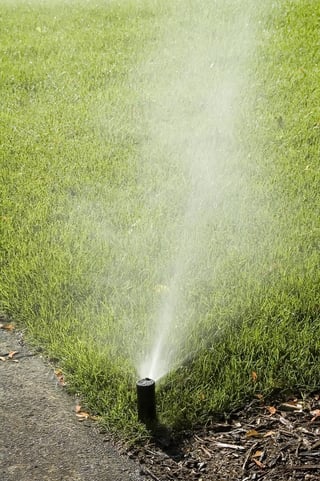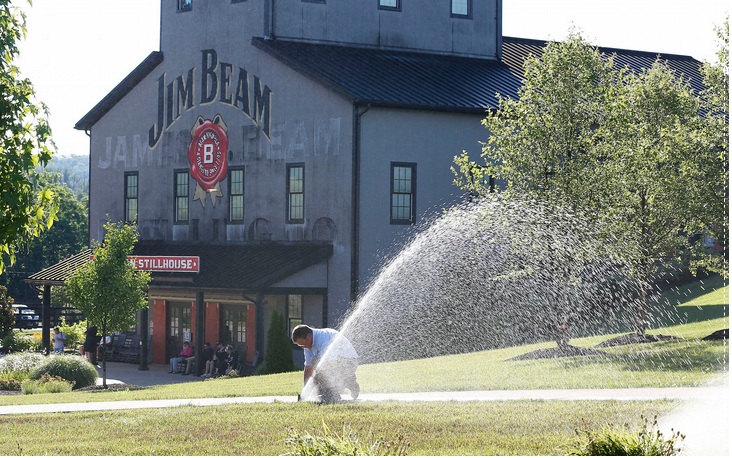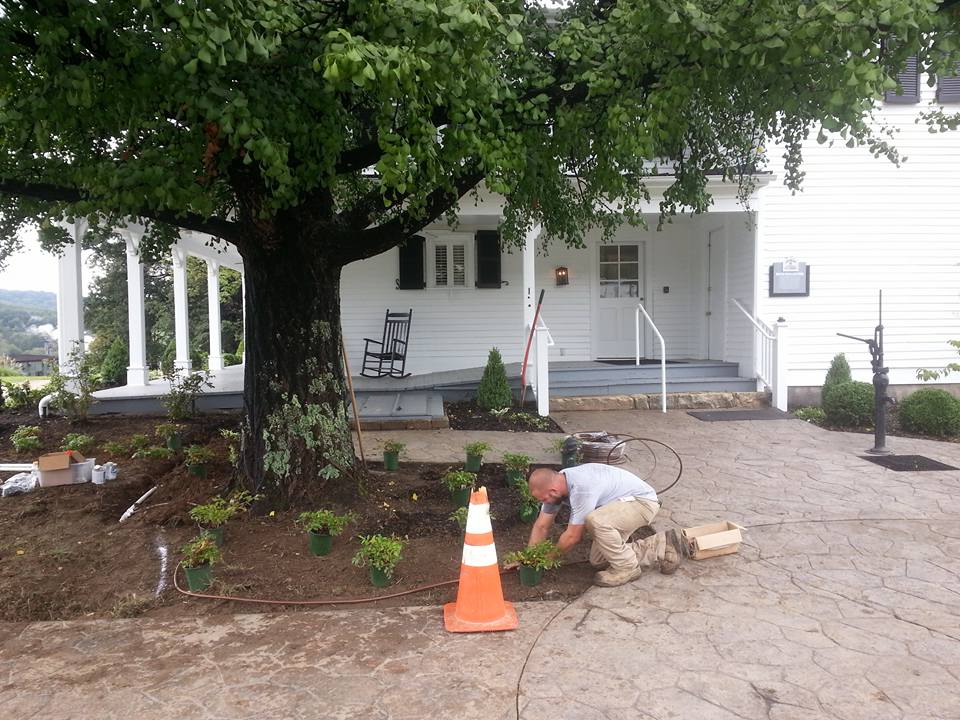Irrigation systems require routine care to keep them functioning properly and to be sure systems are using water efficiently and effectively. A well-running irrigation system should provide appropriate water to plants and turf, while conserving water—our most valuable resource.
 For environmental and economical reasons, irrigation inspections and audits are essential. If an irrigation system is neglected and allowed to run without inspections or maintenance, a number of problems could arise that ultimately could harm plant health and increase the cost of your water bill.
For environmental and economical reasons, irrigation inspections and audits are essential. If an irrigation system is neglected and allowed to run without inspections or maintenance, a number of problems could arise that ultimately could harm plant health and increase the cost of your water bill.
Facilities managers might unknowingly overlook irrigation system issues because many of the system’s components are not visible. If the system turns on, it must be working, right? Unfortunately, that is not always the case. Irrigation leaks and breaks often go unnoticed, until the water bill arrives or plant health begins to deteriorate.
Everyday activity on your commercial property can result in irrigation system upsets. For example, spray heads can get knocked out of place accidentally by pedestrians and vehicles (such as golf carts or lawn equipment). In the grander scheme, the evolution of your landscape—maturing plants, adding more beds or planting more turf—can change your property’s irrigation needs. An irrigation audit can ensure that the system design and functionality is ideal for your landscape.
Now, let’s address the difference between an irrigation inspection and an irrigation audit, and explain what each process entails so you know what to expect.
Irrigation Inspection vs. Irrigation Audit
Irrigation inspections are preventive care for your irrigation system and should occur on a monthly basis May through September, and the purpose is to review the irrigation system for broken or malfunctioning parts and to adjust irrigation heads, if necessary. During the inspection, an irrigation technician will turn on all systems, zone by zone. By watching how the system operates, the technician will identify how water is distributed. If plants and turf are not receiving enough water coverage, this could indicate an irrigation system design issue and an irrigation audit might be necessary to dig deeper.
An irrigation inspection includes the following:
- Running the system to observe water distribution (using a rain gauge, if necessary)
- Checking all working components of the irrigation system
- Adjusting heads as needed
- Examining irrigation system run times and making necessary adjustments
Irrigation audits assess the functionality and design of irrigation systems and are performed on a periodic basis, mainly if there are significant changes in the landscape such as new landscape beds or areas of turf. We perform an irrigation audit for all new clients. An irrigation audit is the deep-dive system review that accounts for every component, the overall design and output.
An irrigation audit includes the following:
- Reviewing the irrigation system design, zone by zone
- Examining water use to ensure efficiency
- Assessing the functionality of key components such as rain sensors, backflow preventers, controllers and all irrigation heads
- Addressing water savings; ensuring efficient water use

Uncovering Common Watering Issues
Irrigation inspections and audits both uncover common watering issues that can negatively impact plant health and your bottom line.
- Watering Turf & Plants: During an irrigation audit we evaluate the system design and commonly identify zones that include both landscape beds and turf. This is not ideal because landscape plants require more water than turf, so the best scenario is to have separate zones for those areas.
- Burying Irrigation Lines: Another common issue noted during irrigation audits is when irrigation lines are not buried to the proper depth. If lines are too close to the surface, the system is more susceptible to breaks during freezing conditions. This is especially true when we get late spring frost after a system has been charged and prepared for the season—and in fall, if temperatures drop to freezing before the irrigation system has been winterized.
Also, when irrigation lines are not buried to at least 12 inches, they can be hit by edging equipment during routine landscape maintenance, or punctured by aerator tines.
- Positioning Sprayheads: When sprayheads are placed too close to walkways, parking lots and other traffic zones, they are more easily knocked out of alignment or broken. (Moving sprayheads can be taken care of during routine irrigation maintenance, while addressing irrigation lines that are not set in to the ground at the appropriate depth requires more significant system renovation.)
- Selecting Appropriate Sprayheads: The type of sprayhead utilized can impact watering efficacy and conservation. Rotary heads might be appropriate for turf, but they are not the best selection for landscape beds. Landscape beds can benefit from watering via drip irrigation, which delivers water more efficiently and effectively to the soil for deep-root feeding. Sprayheads may be used in beds with annuals. Also, if irrigation water is pooling on sidewalks or parking lots, we may evaluate the head to see if a sprayhead vs. rotary will reduce overspray.

Addressing Backflow Preventer Issues and Preventing Theft
A typical irrigation maintenance contract includes a spring service to charge the irrigation system, which involves ensuring that water enters all system lines and zones are running properly. In fall, we perform winterization to clear all lines of water. This avoids breakages from freezing. Additionally, we do an annual check of the blackflow preventer to ensure it is functioning properly.
Theft of backflow systems is not uncommon because these components are made out of brass and can be exchanged at the scrap yard for good money. To prevent theft, some facilities managers opt for backflow covers—these can look like rocks to blend with the landscape. Or, a small shed can be constructed around the backflow prevention system. Some property managers request that backflow devices be removed following irrigation system winterization so they can be stored inside while not in use.
Fixing Small Irrigation Problems Prevents Big Repair Costs
Irrigation systems need care just like any working, mechanical system. Irrigation inspections uncover issues that can be fixed quickly, such as a broken component that could result in water waste. The simplest tweaks of an irrigation system to improve its efficiency and functionality can really add up in terms of water savings. Also, irrigation inspections and audits are important for sustaining the health of plants and turf.
When an irrigation system is running efficiently, it can do much more for your landscape than deliver water. The system protects plants and your investment in the landscape. A properly functioning and well-designed irrigation system reduces water use. Maintaining it with regular care is the key to maximizing the value from your irrigation system.
Can we answer your questions about irrigation audits and inspections? Call us any time in Lexington 859.254.0762 or in Louisville at 502.264.0127. Or, fill out this simple contact form and we’ll get in touch with you.


